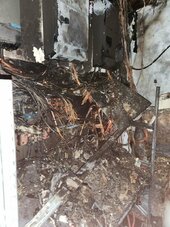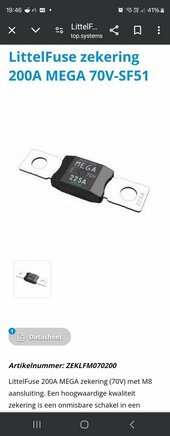So, after 4 to 5 years of working flawless, the 100 kwh lifepo4 battery caught fire at night and burned our house down. Luckily our family just made in out on time.
Inspection of the fire expert revealed that a melt fuse melted, and created an arc between the 2 points wich ultimatly started the fire.
So i learned to not use melt fuse anymore, plus once the house is rebuild, i will put the new system in a seperate shed outdoor.
Inspection of the fire expert revealed that a melt fuse melted, and created an arc between the 2 points wich ultimatly started the fire.
So i learned to not use melt fuse anymore, plus once the house is rebuild, i will put the new system in a seperate shed outdoor.








